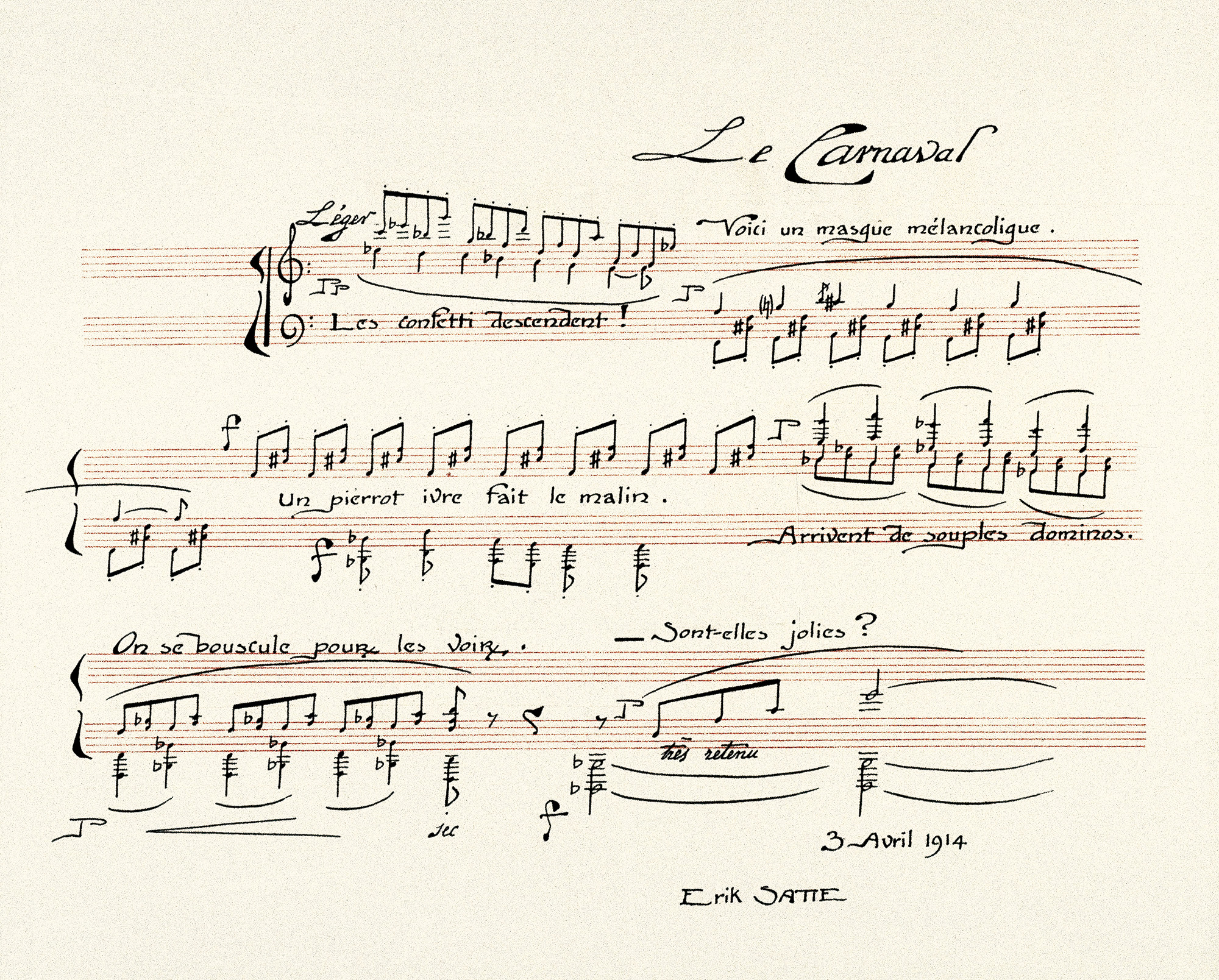Erik Satie (1866-1925) said and did a lot of memorable things, many remarkably outlandish. Brilliant and bonkers, he composed works that range from cabaret ditties to a "symphonic drama," from light music for educating children to complex parodies of the masters. And who can forget such composition titles as "Desiccated Embryos," "Unpleasant Insights" or "Sketches and Provocations of a Big Wooden Fellow," hatched many decades before the Theater of the Absurd or Monty Python?
Even though Satie is now regarded as one of the architects of modern music, early in his career he signaled his desire to think differently by introducing himself as a "gymnopedist," an obscure title meant to impress. Soon after that, the term would reappear as "Gymnopedies," the name for three simple, haunting melodies that would inspire scores of music-lovers, filmmakers and ad men to come.
While his warped wit was undeniable, so was his commitment to a higher cause, be it a mystical sect of his own creation, the establishment of a uniquely French genre of music, or simply a local charity. Wide respect for his gifts came late, but he is now viewed as one of the pioneers of dadaism, minimalism, ambient music, repetitive music and more. Claude Debussy, a long-time friend, dubbed him "the precursor," perhaps referring to his influence on the impressionist music of his day. But could he have predicted how much of an influence Satie would have on future sound artists such as John Cage, Brian Eno or Ryuichi Sakamoto?



















With your current subscription plan you can comment on stories. However, before writing your first comment, please create a display name in the Profile section of your subscriber account page.